|
TennisOne Lessons The Right Grip for the Right Stroke Dave Smith, Senior Editor, TennisOne Like the proverbial phrase, 'which came first, the chicken or the egg?' a similar question can be asked regarding the relationship of grips to strokes. Do we learn the stroke first with whatever grip feels comfortable? Or, do we try to become familiar with an unfamiliar grip and attempt to learn the stroke in the process? Myths and Common Sense Unfortunately, most players learn to play tennis using grips they are comfortable with because the alternative usually creates frustration and an initial lack of confidence. Yet, as a teaching pro for over 25 years, the consequences of such a learning strategy, one that promotes using comfortable and familiar grips, is one that prohibits sustained learning and progressive improvement by almost all who prescribe to it!
The reason for this assessment is multifaceted. First, we must understand that most familiar grips are seldom recognized as 'skilled' grips. Right from the start, I believe we can all see that if we learn using such elementary grips initially, we, at some point, must change this aspect if other grips are necessary for more advanced play and competitive progression. Yet, the problem with this is that once we start 'playing' tennis on any competitive level, it will be most difficult to change to a more unfamiliar grip. Why? Because once we start competing, we will almost always revert back to that which is most familiar or comfortable. This regression stems from the concept that we usually play with the most confidence when we use that which is most familiar or comfortable to us! This explains why so many millions of players attend tennis camps, lessons, clinics, and other learning entities, only to go back home and play with the same flawed mechanics they know are limiting their improvement!
Obviously, it is advisable to learn grips and strokes that will not need to change when we aspire to higher levels. While some change is accompanied with improved play, the difference is in how the change is initiated. If I play using some grip or stroke that is recognized as rudimentary, I MUST change to something else if I ever hope to play at recognized skill levels. However, if I adopt a grip or stroke that is within the realm of skilled play, the changes are by choice. Such evolutionary changes, within skilled grips and strokes, are usually complementary to the player's personality and strategic disciplines. This concept of 'personal embellishments' helps explain why pros, which all play within skilled strokes and grips, don't all play exactly alike. As I mention in my book, TENNIS MASTERY, I don't know anyone who picks up a tennis racquet for the first time and says, "Gee, I would love to play tennis, but I don't want to be very good." Many mediocre players relegate themselves to the notion that they simply must not be very good athletes since they stay at mediocre levels for decades. Yet, this sentiment is not only false, it is usually completely avoidable. Unfortunately, most books, videos, and many teaching pros advocate the concept of learning within comfortable swing elements so as to 'get people playing tennis fast'. Even our USTA Learning Centers' motto is "Learn to play tennis FAST". Such a perception for the general public puts tennis right up there with croquet and backyard badminton in terms of sports that can be played relatively quickly! And, yes, students can be taught simple strokes and grips that allow players to play a rudimentary game of tennis within hours. Unfortunately, such strokes and grips are destined to prevent players from reaching their true 'tennis potential.' Your Tennis Potential Tennis Potential is the level of tennis a player should be able to reach based on the four necessary elements: 1. Athleticism 2. Opportunity 3. Desire 4. Information. Most players have sufficient amounts of the first three conditions. The one usually preventing advancement is the information that is received (or perceived) by the student. The reason for this diatribe on learning philosophies is that when we talk about grips, if a player doesn't understand the complexities of these principles, they will not understand the root of their failure, if-and when-they don't continue to improve. If players understand the consequences of avoiding those grips and/or strokes that may feel uncomfortable, they will attack learning and gain comfort within those grips or strokes much more aggressively.
Grips: the What and Why Over the years, I have discovered that players who seem to stagnate at lower levels are usually deficient in two distinct areas of the game: Volleys and Serves, (second serves, more specifically!). A third area, the backhand groundstroke, is another area that can be weak among players trying to become more skilled. Typically, the problems within these stroke areas can be traced to inferior grips. Volley Grips I start all my lessons, clinics, workshops, and seminars on the volley, using the continental grip. The reasons for this introduction are multifaceted: The continental grip is the least familiar grip-yet most used grip among skilled players! The continental grip is the preferred grip not only for the volley, but also the serve, overhead, and two-handed backhand, (making it a pretty significant grip, don't you think?). Note: While the continental grip is without question the most dominant grip among pros on these strokes, there can be subtle idiosyncrasies and embellishments (as mentioned earlier) among these players that I term 'evolutionary'. That is, most learned the continental grip and then made personal improvements that fit the feel of the individual. It must be understood, that most pros did not learn the more simpleton eastern grips for the volley first then made changes later. It is rare that a player 'embellishes' flawed techniques to the point that they become truly skilled. When players are first allowed to use the more elementary grips on the volley because they are more comfortable, more often than not they use stroke patterns that are not associated with skilled volleys. The eastern grips promote swinging at the volley, they tend to promote a topspin action, and they don't allow for more advanced or effective volleys such as angle volleys or drop volleys, and they seldom allow a player to learn to defend more difficult shots from opponents, (such as harder, more topspin, and lower, balls hit near the feet).
There are many articles that document the grip and volley techniques here at TennisONE. I suggest reading those and learning all they have to offer. Service GripsAgain, the continental grip is the dominant grip used among skilled servers. However, in terms of comfort, it is the most unfamiliar and usually uncomfortable. Understand that the ability to actuate spin on the serve (and the right kind of spin), is the most important factor in developing both an effective (and eventually high speed) serve, as well as a consistent and competitive second serve. (While most 3.0 and 3.5 level players can have a fast-but inconsistent-first serve, their use of a 'dink' second serve reveals their deficiencies.) The continental grip allows for development of spin and also allows the player to reach peak levels of racquet head speed. The continental grip also allows for diversity in this spin. From slice to topspin, from flat to kick, the continental grip opens the door for a player to create a wide range of effect that opponents will have to negotiate in making their returns. Of course, the use of the continental grip requires a different body position and swing pattern than the more rudimentary eastern forehand grip. In fact, this idea of using specific swing patterns for different grips is another reason that many players can't make changes in their grips; not only do we have to get used to a strange grip, we have to assume different positions and strokes that we are just as unfamiliar with! As I mentioned with the volley, there are many serving articles here at TennisONE that you really should look at for detailed information. Two-handed Backhand GripWith but a few exceptions, most two-handed players use a continental grip on their dominant, lower hand and usually an eastern forehand grip for the upper, non-dominant hand. (Jim Courier is one of the few pros that made it big using an eastern backhand grip on his dominant hand. His backhand actually resembles a modern one-handed backhand but with his non-dominant hand attached.)
Most two-handed backhands using the conventional continental grip as their dominant hand usually make contact close to parallel with their front leg. (One-handers using an eastern backhand grip generally hit the ball much further in front of them.) Occasionally, you will find a top player who uses an eastern forehand grip on the lower, dominant hand. This evolved grip position is usually seen when a player becomes more aggressive with the non-dominant upper hand. The two-handed backhand has been called a stroke that resembles a left-handed forehand (for right-handers), and these players tend to let the lower hand become a weaker grip while the upper hand becomes more dominant.
One-Handed Backhand Grip There have really only been two grips associated with the one-handed backhand: Continental and Eastern Backhand. The continental is fairly weak for most players to attempt. (It is excellent for the slice backhand, however.) The eastern backhand grip places more hand behind the racquet providing greater support and power. It also closes the racquet face for more natural topspin. Forehand GripThe most diversity among strokes occurs on the forehand. This is because there are many ways to hit a forehand well and there are many grips that can accomplish this. However, there are certain swing patterns that are usually associated with each grip. Continental Grip: Used as a dominant grip back a number of decades ago, this grip allowed for a flatter forehand drive as well as a natural grip for slice. Since players back several generations ago played the majority of their matches on grass, this ability to slice and keep the ball low on such a fast surface allowed players to attack the net, the dominant playing strategy of the day. One of the last players to use this grip for all his shots was the great John McEnroe. John almost never changed his grip. He used the continental grip for touch and finesse as well as for driving the ball and for disguise.
Stroke Characteristics: Using the continental grip, players can usually hit easily from a closed or neutral stance. It is an excellent grip for half-volleys where a player needs to be ready for a regular volley yet are thrust in a half-volley situation. The wrist can close or open the racquet face as needed. The problem with the continental grip is that when trying to hit with topspin, the wrist must adjust significantly to close the racquet face and allow the racquet to brush up. However, the continental grip is excellent for whipping up the outside of the ball when the ball is low. (Because it can hit the ball with the racquet head well out in front of the hand making it easier to get topspin off a lower ball.) Eastern Forehand Grip: The most preferred learning grip for topspin forehands, the grip is usually quite comfortable for most players and can be used to take players to the top without change. The grip also allows for player embellishments towards the western grips for those players who want more topspin. Compared to the continental grip, the eastern grip closes the racquet face in relation to the contact point. Stroke Characteristics: The eastern forehand is probably the most used grip among club players. It can be used with open and closed stances. Some can hit a slice with the grip, however it is not used by most skilled players to do so. Compared to more western grips, the eastern is easier to hit topspin on lower balls.
Semi Western Grip: The more 'modern' grip, the semi-western grip creates even more of a closed racquet face (than the eastern forehand) and is usually the grip that players adopt if they want to hit excessive topspin. The grip is excellent for high-bouncing balls and when swinging while moving backward. Stroke Characteristics: Contact point is much further in front of the player, especially when hitting off an open stance. The finish is often down near the players left hip, creating two large loops. (Typically, the player will start high, drop down low, brush the ball moving back up again, then finishing low again after reaching some high apex after contact.
Full Western Grip: This grip places the hand almost completely under the handle of the racquet. A very difficult and uncomfortable grip for any beginner, most players who seek a ton of topspin will migrate over to the full western grip. The racquet face is the most closed of the forehand grips. (It is exactly the same grip as an eastern backhand grip only turned palm up on the forehand side!) Stroke Characteristics: Because of the closed face, players must drive up with significant upward brush. This grip is excellent on high bouncing balls, but very poorly suited for low shots as well as balls that are coming nearly straight down. (As letting a ball bounce down from a high point such as a lob.) Overhead Grip As with the serve, the continental grip is the preferred grip on overheads. However, unlike the serve, the overhead is usually not hit with a significant amount of spin. Thus, when hitting an overhead, the skilled player pronates the hand early and flattens the ball out. (Much like giving the ball a 'high five'.) The use of the continental grip increases the racquet head speed through allowing for greater distance of acceleration within the swing pattern. Conclusion I think I have made it fairly clear that the right grip is quite important to proper strokes. While there are some exceptions to these descriptions, the vast majority of skilled players adopt these grips. If your goal is to reach your highest level possible, you will want to work and practice within these grips and make them comfortable. Your comments are welcome. Let us know what you think about Dave Smith's article by emailing us here at TennisOne .
|

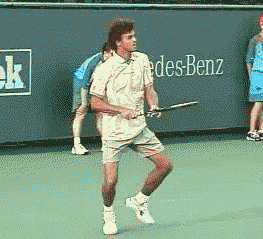
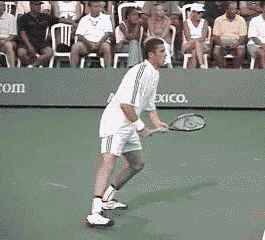
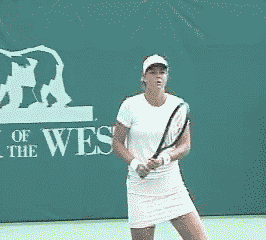
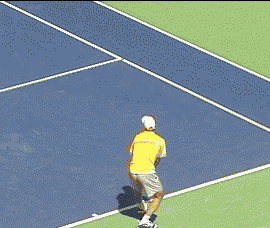
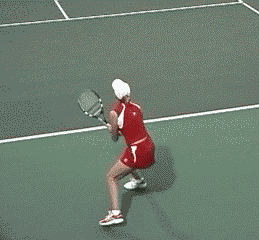
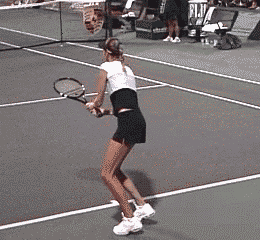
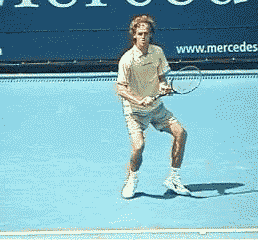
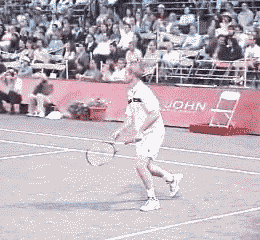
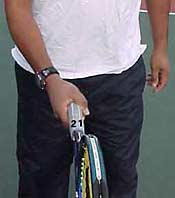
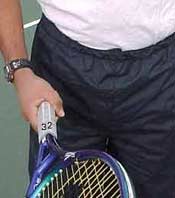
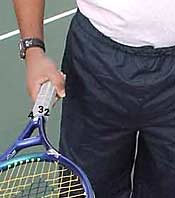
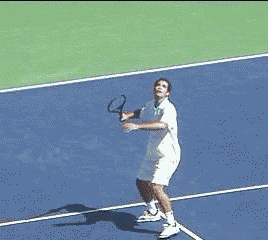

 Your comments are welcome. Let us know what you think about this article by
Your comments are welcome. Let us know what you think about this article by